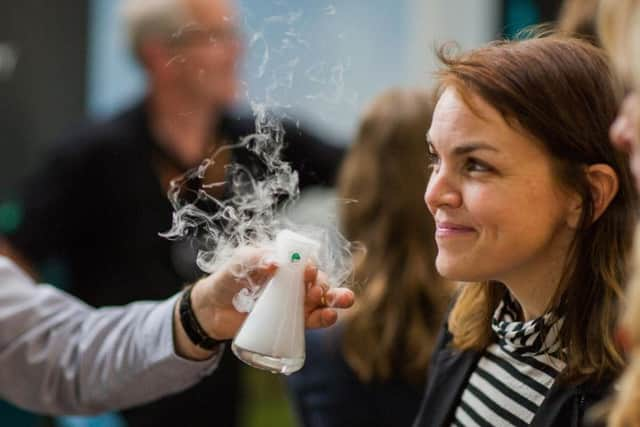Bradford Science Festival celebrates 150 years since chemist Mendeleev became father of the periodic table


He was never awarded a Nobel Prize for his work despite its revolutionary impact on modern chemistry.
But Dmitri Mendeleev’s successes did earn him the colloquial title of the ‘Father of the Periodic Table’ and the rare yet befitting distinction of an element being named in his honour.
Advertisement
Hide AdAdvertisement
Hide Ad£50 note honour is fitting tribute to codebreaker Alan Turing who changed science and society – The Yorkshire Post saysMendelevium is one of 118 elements that today make up the periodic table, the basis of which was discovered by the Russian chemist 150 years ago.


Elements make up everything
“He was trying to understand the elements that people knew,” explains Dr Philip Drake, a lecturer in chemistry at the University of Bradford. “People had always thought matter was made up of smaller elements. For a long time there was only four - air, earth, fire and water. But there was always the concept that elements made up everything.”
See inside Scarborough’s secret GCHQ spy baseBy the time Mendeleev compiled the table, scientists were aware of at least 62 elements. Chemists before him had looked for ways of classifying them to reflect their properties and historically, atomic masses were used to try to place them in an order and work out patterns and sequences.
Mendeleev realised that when he put them in order of increasing atomic weight, certain types of element regularly occurred. But there were some exceptions which didn’t work - and if an element appeared to be in the wrong place due to its weight, he moved it to where it best fitted with the pattern he had discovered instead.
A shift away from mass
Advertisement
Hide AdAdvertisement
Hide Ad“Previously the elements had been put in a mass size order getting heavier and heavier,” says Dr Drake. “But when he thought things were in the wrong place, he swapped the elements around based on their chemistry rather than their weight - he went against the grain.”
How man got to the moon: The extraordinary story of the Apollo 11 missionIt wasn’t until years after his death that the switching was explained and understood though. That only came with the development of the idea that the atoms in each element are made up of smaller particles - protons, neutrons and electrons.
Today, the periodic table today lists the elements by their increasing atomic number - the amount of protons in their atom’s nucleus, giving a very similar order to the atomic mass, but with some exceptions, like Mendeleev identified.
Filling in the gaps
He left gaps in his table for as-yet undiscovered elements to complete the pattern he envisaged and even predicted some of their physical properties.
Advertisement
Hide AdAdvertisement
Hide Ad“When he laid down his table back in 1869, he left gaps in there and that structure of the table is what chemists have been working on since to fill in those gaps and to explain the structure and patterns the table has. He laid the foundations for chemistry research from that point onwards to explain why the table is what it is.”
Still work is ongoing to explain and understand its patterns - and it continues to be used as a resource to help predict chemical reactions based on elements’ properties and similarities.
Anniversary events
With such significant practical applications, the table’s 150th anniversary is being marked at the Bradford Science Festival this weekend, organised by the National Science and Media Museum in partnership with The Broadway Shopping Centre, Bradford Council and the University of Bradford.
Chemistry highlights include an element trail, slime making and a forensic look at chemical compounds, but the free festival is also celebrating the 50th anniversary of the first crew to land on the moon and has a topical focus on the effects of plastics on the environment.
Advertisement
Hide AdAdvertisement
Hide Ad“The periodic table underpins a lot that we do with everyday life and I think it is something we should talk about more and break down to make it accessible to a wider and family audience,” says Scott McKenzie-Cook, events manager at the museum. “We are about promoting curiosity and making science accessible and fun for all people across all generations and communities.”